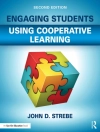Taking a novel approach to the contradictory impulses of violence and care, illness and healing, this book radically shifts the way we think of the interrelations of institutions and experiences in a globalizing world. Living and Dying in the Contemporary World is not just another reader in medical anthropology but a true tour de force—a deep exploration of all that makes life unbearable and yet livable through the labor of ordinary people.
This book comprises forty-four chapters by scholars whose ethnographic and historical work is conducted around the globe, including South Asia, East Asia, Latin America, Africa, the Middle East, Europe, and the United States. Bringing together the work of established scholars with the vibrant voices of younger scholars, Living and Dying in the Contemporary World will appeal to anthropologists, sociologists, health scientists, scholars of religion, and all who are curious about how to relate to the rapidly changing institutions and experiences in an ever more connected world.
Cuprins
Acknowledgments
Introduction: A Concept Note (Clara Han and Veena Das)
SECTION 1. NATALITY, SEXUALITY, REPRODUCTION
1. Maternal Mortality, Technological Innovations, and Therapeutic Strategies (Stanford–ISERDD Study Collective)
2. Conceiving Life and Death: Stem Cell Technologies and Assisted Conception in India and the Middle East (Aditya Bharadwaj and Marcia C. Inhorn)
3. The Pregnant Hijra: Laughter, Dead Babies, and Invaluable Love (Vaibhav Saria)
4. New Lives for Children: Adoption Documents and the Law in Central Mexico (Anaid Citlalli Reyes Kipp)
5. Transnational Adoption and (Im)possible Lives (Eleana Kim)
6. “Forced Pregnancy, ” Humanitarian Access to Reproductive Rights, and Locating “Life” within the Powers of “Death” (Nayanika Mookherjee)
7. Bleeding Dreams: Miscarriage and the Bindings of the Unborn in the Palestinian Refugee Community of Tyre, South Lebanon (Sylvain Perdigon)
SECTION 2. MEDICAL, LEGAL, AND PHARMACEUTICAL SPACES
8. Waiting and the Architecture of Care (Sophie Day)
9. The Social Phenomenology of the Next Epidemic: Pain and the Politics of Relief in Botswana’s Cancer Ward (Julie Livingston)
10. Living and Dying in Mental Health: Guns, Race, and the History of Schizophrenic Violence (Jonathan M. Metzl)
11. The Wealth of Populations: Poverty and HIV/AIDS in Rural Central China (Shao Jing)
12. Living and Dying with Mycobacteria: Tuberculosis and the Regulation of Anti-tuberculous Drugs in Nepal (Ian Harper and Nabin Rawal)
13. The Juridical Hospital (Joao Biehl)
14. The Right of Recovery (Adriana Petryna)
15. Just Living: Law, Life, Livelihood, and Sexual Assault (Sameena Mulla)
16. “If You Remember, You Can’t Live”: Trauma, Insecurity, and the F/utility of “PTSD” in Haiti (Erica Caple James)
SECTION 3. HEALING: RELIGIOUS AND SECULAR BODIES • 329
18. Thinking about the Secular Body, Pain, and Liberal Politics (Talal Asad)
19. Nonself Help: How Immunology Might Reframe the Enlightenment (A. David Napier)
20. Secular Histories, Saintly Returns: Death and Devotion in Modern Turkey (Christopher Dole)
21. The Good and the Bad Breast: Cosmetic Surgery and Breast Cancer (Bernadette Wegenstein)
22. Attachments of Life: Intimacy, Genital Injury, and the Flesh of the U.S. Soldier Body (Zoë H. Wool)
23. Key Acts: Organ Transplantation and Subjectivities in the Public Sphere (Aslihan Sanal)
24. Life, Death, and Reverie: Method in a Congolese Medical History (Nancy Rose Hunt)
SECTION 4. PRECARIOUS LIVES
25. Life and Concept (Michael D. Jackson)
26. Never Quite Given: Calling into Question the Relation between Person and World in Postinvastion Iraq (Hayder Al-Mohammad)
27. Mourning, Grief, and the Loss of Politics in Palestine: The Unvoiced Effects of Military Occupation in the West Bank (Lotte Buch Segal)
28. Echoes of a Death: Violence, Endurance, and the Experiences of Loss (Clara Han)
29. Walking Through: Movement, Schizophrenia, and the Vicissitudes of Presence (Sarah Pinto)
30. “Not Dead Yet”: Changing Disability Imaginaries in the Twenty-First Century (Faye Ginsburg and Rayna Rapp)
31. Suffering from Evidence: Expertise, Racial Health Disparities, and the Case of Jerry (Carolyn Rouse)
32. “God Isn’t Finished with This City Yet”: Disputing Katrina-Related Deaths in Post-Disaster New Orleans (Anne M. Lovell)
33. Hunger and Thirst: Crises at Varying Thresholds of Life (Bhrigupati Singh)
34. “Tibet on Fire”: Self-Immolation, Affect, and the Global “N of 1” (Vincanne Adams)
SECTION 5: DEATH AND DYING
35. After Life (Michael Lambek)
36. A Good Death, Recorded (Robert Desjarlais)
37. Lonely Death: Possibilities for a Not-Yet Sociality (Anne Allison)
38. Chemonotes (Harry M. Marks)
39. The Experience of Death in a Dutch Nursing Home: On Touching the Other (Roma Chatterji)
40. Life beside Itself (Lisa Stevenson)
41. Traces of Destruction and the Thread of Continuity in Postgenocide Cambodia (Anne Yvonne Guillou)
42. Corpus Vile: Death and Expendable Youth in Urban Congo (Filip De Boeck)
43. The Value of Life and the Worth of Lives (Didier Fassin)
44. The Evolution of Mortality Rates by Sex: The Experiences of the Rich and the Uncertainties of the Not-So-Rich (Rabia Ali and Jishnu Das)
Contributors
Index
Despre autor
Veena Das is Krieger-Eisenhower Professor of Anthropology at Johns Hopkins University. She is the author of Affliction: Health, Disease, Poverty and Life and Words: Violence and the Descent into the Ordinary, as well as coeditor of The Ground Between: Anthropologists Engage Philosophy.Clara Han is Associate Professor of Anthropology at Johns Hopkins University. She is the author of Life in Debt: Times of Care and Violence in Neoliberal Chile.












